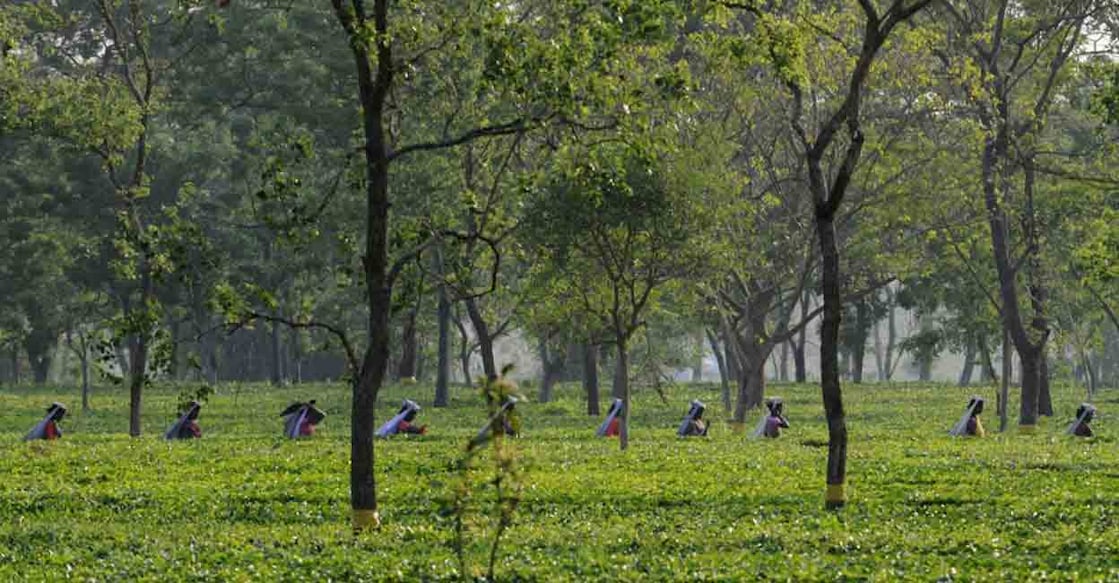Explained | Importance of agroforestry in India

Mail This Article
NITI Aayog has launched ‘Greening and Restoration of Wasteland with Agroforestry’ (GROW) report and portal.
The report provides state-wise and district-wise analysis, supporting government departments and industries for greening and restoration projects.
This multi-institutional effort led by NITI Aayog utilised remote sensing and geographic information system (GIS) to assess agroforestry suitability across all districts in India.
Using thematic datasets, an Agroforestry Suitability Index (ASI) was developed for national-level prioritisation.
The GROW initiative aligns with national commitments, aiming to restore 26 million hectares of degraded land by 2030 and create an additional carbon sink of 2.5 to 3 billion tonnes of carbon dioxide equivalent.
The GROW-Suitability Mapping portal allows universal access to state and district-level data.
What is agroforestry?
• Agroforestry is defined as a land use system which integrates trees and shrubs on farmlands and rural landscapes to enhance productivity, profitability, diversity and ecosystem sustainability.
• It is a dynamic, ecologically based, natural resource management system that, through integration of woody perennials on farms and in the agricultural landscape, diversifies and sustains production.
• Agroforestry systems include both traditional and modern land-use systems where trees are managed together with crops and or/ animal production systems in agricultural settings.
• It is practiced in both irrigated and rain-fed conditions where it produces food, fuel, fodder, timber, fertilizer and fibre, contributes to food, nutritional and ecological security, sustains livelihoods, alleviates poverty and promotes productive and resilient cropping and farming environments.
• It can provide a wide range of economic, sociocultural, and environmental benefits.
• Agroforestry also has the potential to enhance ecosystem services through carbon storage, prevention of deforestation, biodiversity conservation, and soil and water conservation.
• In addition, when strategically applied on a large scale, with appropriate mix of species, agroforestry enables agricultural land to withstand extreme weather events, such as floods and droughts, and climate change.
• Agroforestry is crucial to smallholder farmers and other rural people, because it can enhance their food supply, income and health.
• It has significant potential to provide employment to rural and urban populations through production, industrial application and value addition ventures.
• In short, trees on farm or agroforestry are uniquely place for achieving multiple objectives, especially the food, nutrition, employment, health and environmental security.
There are three main types of agroforestry systems:
i) Agrisilvicultural systems are a combination of crops and trees, such as alley cropping or homegardens.
ii) Silvopastoral systems combine forestry and grazing of domesticated animals on pastures, rangelands or on-farm.
iii) The three elements, namely trees, animals and crops, can be integrated in what are called agrosilvopastoral systems and are illustrated by home gardens involving animals as well as scattered trees on croplands used for grazing after harvests.
Need for promotion of agroforestry
• Approximately 16.96 per cent of the Total Geographical Area (TGA) is wasteland, requiring transformation for productive use.
There is need for promotion of agroforestry mainly for three things:
i) Reducing import of wood and wood products.
ii) Carbon sequestration to combat climate change at global and national level.
iii) Addressing sub-optimal use of arable land.
• Fallow land and culturable wastelands can be converted to productive use through agroforestry.
• Due to the significance of goods and services provided by agroforestry, the Union Budget of FY-2022-23 underlined the promotion of agroforestry and private forestry as a priority.
• India, the seventh-largest country globally, faces issues like increased build-up areas, degraded land, and imbalanced resources.
• Geospatial technologies and GIS are employed to map and prioritise wastelands for agroforestry interventions.
National Agroforestry Policy
• The government of India formulated the National Agroforestry Policy (NAP) in 2014 in order to encourage tree plantation in farm land.
• This aligns with global commitments like the Paris Agreement, Bonn Challenge, UN Sustainable Development Goals, United Nations Convention on Combating Desertification (UNCCD), Doubling Farmers Income, Green India Mission and more.
• Currently, agroforestry covers 8.65 per cent of India’s total geographical area, totalling about 28.42 million hectares.
• In accordance to the recommendation of NAP policy the Sub-Mission on Agroforestry (SMAF) was launched in 2016-17 with an aim to promotes tree plantation on farm land with the motto of ‘Har Medh Par Ped’, along with crops/cropping system to help the farmers to get additional income and make their farming systems more climate resilient and adaptive.
• Since the inception of the scheme in 2016-17, a total area of 1.21 lakh hectare has been covered under plantation with a total number of 532.30 lakh trees planted.
• The ministry of agriculture and farmers welfare, through SMAF, promotes agroforestry plantation on farm land irrespective of forest cover.
• Under the Mission, multipurpose tree species with short, medium and long term returns are encouraged, so that farmers may get additional income at regular intervals. These include fruits, fodder, medicinal, timber species.
Benefits of SMAF:
i) Agroforestry provides additional income/savings opportunities for farmers and will also serve as a cushion to crop damage.
ii) Increase in tree cover through agroforestry leads to higher carbon sequestration and compliments national initiatives on climate change adaptation and mitigation efforts.
iii) Trees grown in farm land help in enriching soil organic matter and enhancing nutrient uptake of the crops measurable under different time intervals. This can be periodically assessed from the soil health status depicted on the soil health card to be issued to the farmers from time to time.
iv) Contribute in availability of agroforestry produce to meet the increasing demand of raw materials for wood based industries which will result in saving of foreign exchange being used for import of wood and wood based products.
v) Development of information systems and database on agroforestry.
• At present, the restructured agroforestry component is being implemented under the Rashtriya Krishi Vikas Yojana (RKVY) and focuses on Quality Planting Material.
• The scheme is implemented with objectives to encourage and expand tree plantation in a complementary and integrated manner with crops to improve productivity, additional income generation and improved livelihoods of rural households, especially the small farmers.




